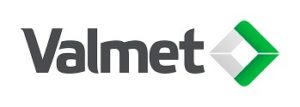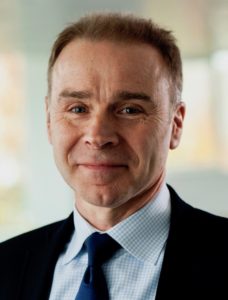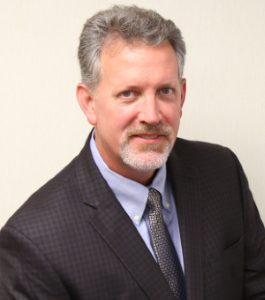Baker Hughes Company Announces Fourth Quarter and Total Year 2019 Results
“We closed out a strong year of performance with solid results in the fourth quarter, delivering strong cash flow, strong orders in Turbomachinery & Process Solutions (TPS) and Oilfield Equipment (OFE), and better execution in Digital Solutions (DS). For the full year 2019, we achieved a number of key milestones, including 20 percent year-over-year order growth in TPS, almost 300 basis points of margin improvement in TPS, 12 percent order growth in OFE, and free cash flow of $1.2 billion. In addition, we accelerated our separation efforts from GE, launched our new company brand, and positioned ourselves to compete more effectively in a changing marketplace. I cannot thank our employees enough for their hard work and dedication to achieve our goals throughout the year,” said Lorenzo Simonelli, Baker Hughes Chairman, President and Chief Executive Officer.
“As we look ahead to 2020, we see a macro environment that is slowly improving, as well as a range of opportunities to further strengthen Baker Hughes on both a near-term and long-term basis. In the near-term, we continue to identify and execute on opportunities to improve our day-to-day operations and cash flow efficiency. On a longer-term basis, we see several attractive growth opportunities for our company, and we remain focused on positioning Baker Hughes for the upcoming energy transition and the digital transformation of the industry."
“Overall, I am pleased with our fourth quarter results which closed out a solid 2019. As we look forward to 2020, we are clearly focused on executing our strategy and generating strong free cash flow, improving margins, and driving returns,” concluded Simonelli.
Quarter Highlights
Winning with Customers
Baker Hughes’ Oilfield Services (OFS) segment was awarded its largest-ever downstream chemicals contract in the quarter, becoming Valero’s largest hydrocarbon treatment provider with a term of five years. The award expands the company’s existing scope to include all 15 of Valero’s refineries globally. The companies’ longstanding relationship, and Baker Hughes’ consistent service delivery and leading chemical capabilities were key drivers of this important award.
Also in the quarter, OFS continued to gain traction in its artificial lift product line. The company was awarded the majority scope for a major electrical submersible pump (ESP) tender with Saudi Aramco. This includes three long-term contracts to support all major projects in the country across onshore and offshore as well as sweet and harsh environments. Baker Hughes’ strong service delivery and track record with the customer were integral to this win.
The OFE segment saw strong growth across its flexible pipe systems product line, with multiple awards from Petrobras in Brazil. This includes pre-salt production and gas injection contracts for various fields in water depths up to 2,500m. Baker Hughes also secured the flexible water alternating gas (WAG) jumpers and service lines contract for the first phase of the Mero project, (Mero I) by the Libra Consortium.
Baker Hughes’ OFE segment continued to gain traction in the quarter with its Subsea Connect approach. The teams secured a number of subsea production wins in key markets, including offshore Australia and the North Sea, building on strong progress throughout 2019.
Baker Hughes’ TPS segment was awarded a contract to supply turbomachinery equipment for Total S.A.'s Mozambique Liquefied Natural Gas (LNG) export facility. The company will provide two liquefaction trains, including six gas turbines and twelve centrifugal compressors. The project is Mozambique’s first onshore LNG export facility. The first two LNG trains are expected to produce approximately 12.9 million tons per annum (MTPA) of LNG.
TPS continued the momentum in its on-and-offshore segment in the quarter, securing an important technology award for a floating, storage, production, and offloading vessel (FPSO) offshore Latin America. Baker Hughes will provide the power generation equipment for the FPSO, including four LM2500+G4 gas turbines. This award builds on strong progress through the year, as the company’s power generation and/or compression technology was selected for most of the major FPSO projects sanctioned in 2019.
In the quarter, TPS’ NovaLT12 turbine reached an important milestone, starting operations at Lucart’s cogeneration plant in their paper mill in Diecimo, Italy. Developed by Baker Hughes, the NovaLT family of gas turbines provides a more-efficient, cleaner power generation solution for a broad range of industrial and emerging energy applications. Baker Hughes’ technology was selected for the cogeneration project for its ability to reduce emissions while improving efficiencies, demonstrating the strength and versatility of its portfolio.
In DS, the Bently Nevada product line was awarded the first order for its Orbit 60 Series condition monitoring and protection system by a major North American utility provider. The order comes shortly after the system’s commercial launch in late 2019, demonstrating a strong commercial interest in the system’s features and capabilities. Bently Nevada is the gold standard of condition monitoring for critical assets, with more than 100,000 systems installed globally. Orbit 60 is DS's next generation flagship system, raising the bar for digital transformation in the energy sector. With multiple test sites in operation today, Orbit 60 has enhanced cyber security features with greater flexibility and versatility than other available systems.
DS was also awarded four orders for its Flare.IQ emissions reduction technology for multiple downstream projects across Asia, representing growing commercial interest outside of North America. A cornerstone of the company’s energy transition portfolio, Flare.IQ is an advanced flare control platform that reduces methane emissions, ensures high-efficiency flare combustion, and reduces steam usage in flare systems. Building on its proven track record and 50+ installations in North America, this win demonstrates the growing need for lower carbon technology and flare management on a global scale.
Technology and Innovation
In the fourth quarter, Baker Hughes, C3.ai, and Microsoft announced an alliance to bring enterprise artificial intelligence (AI) solutions to the energy industry on Microsoft Azure, an industry-leading cloud computing platform. This alliance will enable customers to streamline the adoption of scalable AI solutions for the energy industry that help promote safety, reliability, and sustainability.
Baker Hughes’ DS segment continued to strengthen its capabilities, announcing technology partnerships with leading cyber security providers. This includes a collaboration with Tripwire Inc. to integrate industrial cybersecurity capabilities into its Nexus Controls SecurityST solution. DS is also teaming up with Trend Micro, one of the first cyber-security leaders in the industrial IoT space, to provide comprehensive protection across industrial control systems and operating technology environments.
Baker Hughes’ OFS segment continued enhancing its chemicals capabilities in the Middle East. During the quarter, SABIC announced that it will partner with Baker Hughes to enable several water treatment and chemicals projects in Saudi Arabia. The team also broke ground on its first chemicals manufacturing facility in partnership with Saudi Aramco. These milestones support localization initiatives in the country and underpin Baker Hughes’ commitment to the Middle East region.
Leading the Energy Transition
During the quarter, Baker Hughes made a significant step towards its commitment to net-zero carbon equivalent emissions from operations by 2050 by entering into an agreement to purchase 100 percent of its Texas electricity from renewable sources. This agreement represents 12 percent of the company’s global carbon equivalent emissions and will result in a reduction of 1.2 million metric tons of CO2 equivalent emissions over the next ten years.
Baker Hughes also reinforced its commitment to transparency and corporate responsibility, announcing its participation in the UN’s Global Compact initiative - a voluntary leadership platform for the development, implementation and disclosure of responsible business practices. In joining the UN Global Compact, Baker Hughes commits to align responsible business practices with the Ten Principles of the United Nations Global Compact on human rights, labor, environment and anti-corruption, as well as take action in broader sustainable development goals.
Consolidated Results by Reporting Segment
Consolidated Orders by Reporting Segment
Orders for the quarter were $6,944 million, down 11 percent sequentially and up 1 percent year-over-year. The sequential decline was a result of lower volume in Turbomachinery & Process Solutions, and Oilfield Services, partially offset with higher orders in Oilfield Equipment, and Digital Solutions. Equipment orders were down 23 percent sequentially and service orders were up 4 percent.
Year-over-year, the orders growth was driven by Oilfield Equipment and Oilfield Services, partially offset by a decline in Turbomachinery & Process Solutions and Digital Solutions orders. Year-over-year equipment orders were up 1 percent and service orders were up 1 percent.
The Company's total book-to-bill ratio in the quarter was 1.1; the equipment book-to-bill ratio in the quarter was 1.2.
Remaining Performance Obligations (RPO) in the fourth quarter ended at $22.9 billion, an increase of $0.7 billion from the third quarter of 2019. Equipment RPO was $8.1 billion, up 10 percent sequentially. Services RPO was $14.8 billion.
Consolidated Revenue by Reporting Segment
Revenue for the quarter was $6,347 million, an increase of $465 million, or 8 percent, sequentially. The increase was driven primarily by higher volume across most segments. Turbomachinery & Process Solutions was up 36 percent, Digital Solutions was up 8 percent, Oilfield Equipment was up 5 percent while Oilfield Services was down 2 percent.
Compared to the same quarter last year, revenue was up 1 percent. Oilfield Services was up 7 percent, Oilfield Equipment was up 5 percent partially offset by Turbomachinery & Process Solutions down 8 percent and Digital Solutions down 5 percent.
Consolidated Operating Income by Reporting Segment
On a GAAP basis, operating income for the fourth quarter of 2019 was $331 million. Operating income increased $34 million sequentially and decreased $51 million year-over-year. Total segment operating income was $665 million for the fourth quarter of 2019, up 25 percent sequentially and up 9 percent year-over-year.
Adjusted operating income (a non-GAAP measure) for the fourth quarter of 2019 was $546 million, which excludes adjustments totaling $216 million before tax, mainly related to restructuring and separation related charges. A complete list of the adjusting items and associated reconciliation from GAAP has been provided in Table 1a in the section entitled “Charges and Credits.” Adjusted operating income for the fourth quarter was up $125 million, or 30 percent sequentially, driven by margin expansion across Turbomachinery & Process Solutions, Digital Solutions and Oilfield Equipment, partially offset by Oilfield Services. Adjusted operating income was up $49 million, or 10 percent year-over-year driven by margin expansion across Turbomachinery & Process Solutions and Oilfield Equipment, partially offset by Digital Solutions and Oilfield Services.
Depreciation and amortization for the fourth quarter of 2019 was $354 million.
Corporate costs were $118 million in the fourth quarter of 2019, up 8 percent sequentially and up 7 percent year-over-year.
Other Financial Items
Income tax expense in the fourth quarter of 2019 was $212 million.
GAAP diluted earnings per share were $0.07. Adjusted diluted earnings per share were $0.27. Excluded from adjusted diluted earnings per share were all items listed in Table 1a in the section entitled "Charges and Credits" as well as the "other adjustments (non-operating)" found in Table 1b.
Cash flows generated from operating activities were $1,357 million for the fourth quarter of 2019. Free cash flow (a non-GAAP measure) for the quarter was $1,053 million. A reconciliation from GAAP has been provided in Table 1c in the section entitled "Charges and Credits."
Capital expenditures, net of proceeds from disposal of assets, were $304 million for the fourth quarter of 2019.
Results by Reporting Segment
The following segment discussions and variance explanations are intended to reflect management's view of the relevant comparisons of financial results on a sequential or year-over-year basis, depending on the business dynamics of the reporting segments.
Oilfield Services
Oilfield Services (OFS) revenue of $3,292 million for the fourth quarter decreased by $57 million, or 2 percent, sequentially.
North America revenue was $1,044 million, down 11 percent sequentially. International revenue was $2,248 million, an increase of 4 percent sequentially, driven by Latin America, Asia Pacific, and the Middle East. From a product line perspective, the sequential decline of 2 percent in OFS was driven primarily by international Pressure Pumping, Drilling Services, and Completions.
Segment operating income before tax for the quarter was $235 million. Operating income for the fourth quarter of 2019 was down $39 million, or 14 percent, sequentially, primarily driven by lower volume and cost productivity.
Oilfield Equipment
Oilfield Equipment (OFE) orders were up $63 million, or 6 percent, year-over-year, driven primarily by higher equipment order intake. Equipment orders were up 3 percent driven by higher order volume in the Flexible Pipe and Surface Pressure Control businesses. Services orders were up 16 percent.
OFE revenue of $765 million for the quarter increased $36 million, or 5 percent, year-over-year. The increase was driven by higher volume in the Subsea Production Systems business, Services business, and Offshore business. These increases were partially offset by lower volume in the Flexible Pipe and Surface Pressure Control businesses.
Segment operating income before tax for the quarter was $16 million, up $3 million year-over-year. The increase was driven primarily by higher volume.
Turbomachinery & Process Solutions
Turbomachinery & Process Solutions (TPS) orders were down 10 percent year-over-year. Equipment orders were down 16 percent and service orders were down 4 percent.
TPS revenue of $1,632 million for the quarter decreased $150 million, or 8 percent, year-over-year. The decrease was driven by lower equipment and installation revenue, partially offset by higher services volume. Equipment revenue in the quarter represented 38 percent of total segment revenue, and Service revenue represented 62 percent of total segment revenue.
Segment operating income before tax for the quarter was $305 million, up $48 million, or 19 percent, year-over-year. The increase was driven primarily by business mix and cost productivity, partially offset by lower volume.
Digital Solutions
Digital Solutions (DS) orders were down 4 percent year-over-year, driven primarily by lower order intake in the Measurement & Sensing and Pipeline & Process Solutions businesses.
DS revenue of $659 million for the quarter decreased 5 percent year-over-year, mainly driven by the Controls and Pipeline & Process Solutions businesses, partially offset by volume growth in the Bently business.
Segment operating income before tax for the quarter was $109 million, down 5 percent year-over-year. The decrease year-over-year was primarily driven.
Source: Baker Hughes, a GE comany LLC





